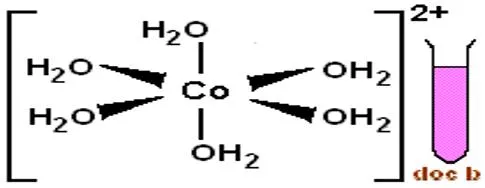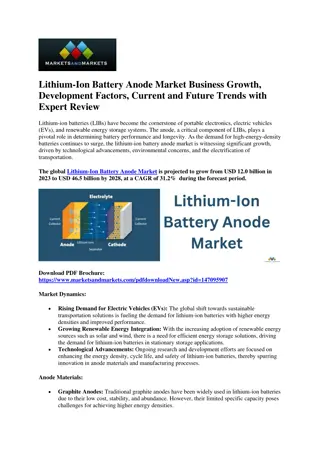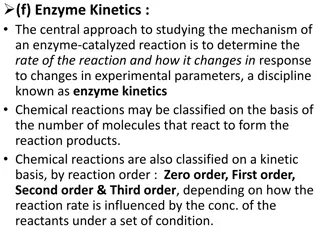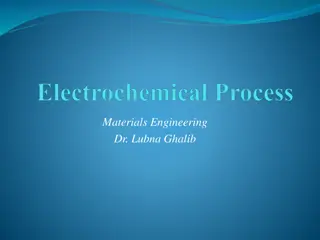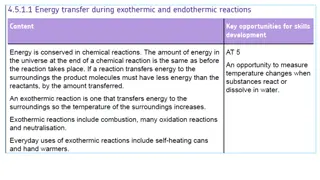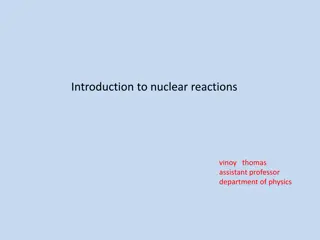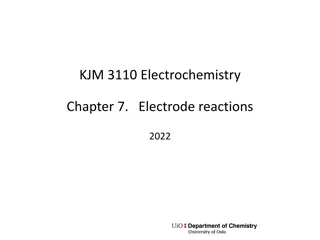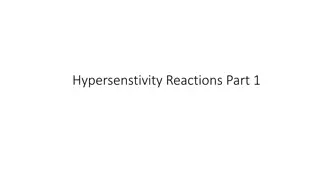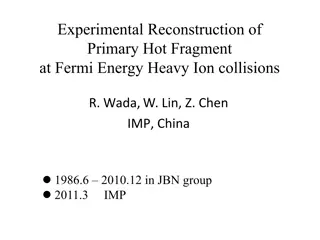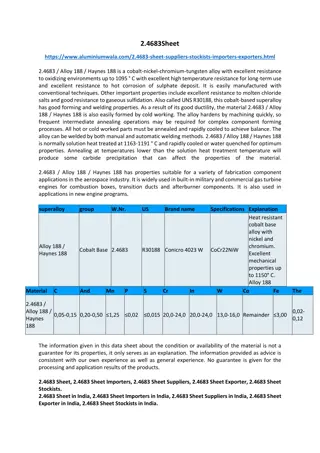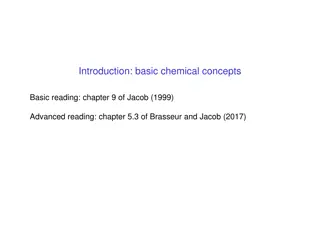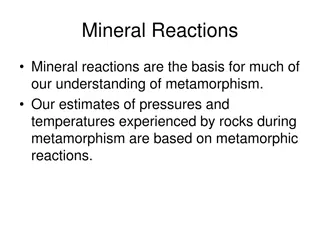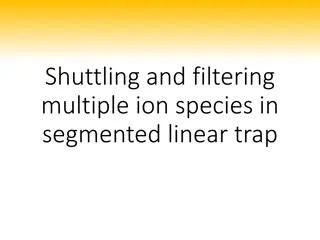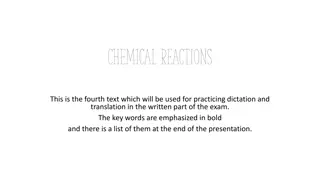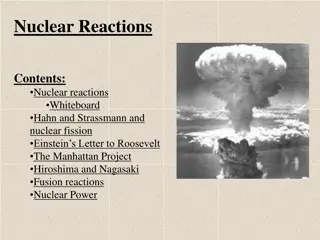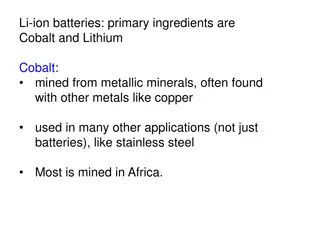Detecting Cobalt(II) Ion Reactions in Solutions
This experiment outlines various methods for detecting Cobalt(II) ions (Co2+) in solution using reagents like sodium hydroxide, ammonia, sodium or potassium carbonate, and more. Observations and changes in color are noted throughout the process to identify the presence of the Cobalt ions. The reactions provide insights into the chemical properties of Cobalt(II) ions and how they interact with different chemicals.
Download Presentation

Please find below an Image/Link to download the presentation.
The content on the website is provided AS IS for your information and personal use only. It may not be sold, licensed, or shared on other websites without obtaining consent from the author.If you encounter any issues during the download, it is possible that the publisher has removed the file from their server.
You are allowed to download the files provided on this website for personal or commercial use, subject to the condition that they are used lawfully. All files are the property of their respective owners.
The content on the website is provided AS IS for your information and personal use only. It may not be sold, licensed, or shared on other websites without obtaining consent from the author.
E N D
Presentation Transcript
Cobalt(II) ion Reactions: Detecting Cobalt(II) Ion (Co2+) : 1)This solution is prepared by dissolving (1g) of cobalt (II) nitrate Co(NO3)2.6H2O in water to form a reddish pink solution due to forming complex ion [Co(H2O)6]2+: 2) Co(NO3)2.6H2O + H2O [Co(H2O)6]2+ Dark pink solid reddish pink clear solution This ion can be abbreviated as (Co2+) to carry out the following detections:
1)Put (10) drops of [Co(H2O)6]2+solution in a test tube, add (2) drops of sodium hydroxide (NaOH), observe the change, divide the product into two quantities, heat one of them for (5) mints., and observe the change. Add (2) drops of hydrogen peroxide (H2O2) to the second quantity, observe the change, and write down your notices after each addition.
2) Put (10) drops of [Co(H2O)6]2+solution in a test tube, add (2) drops of ammonia hydroxide (NH4OH), then add some more of the same detector, observe the change, and write down your notices in both cases.
3) Put (10) drops of [Co(H2O)6]2+solution in a third test tube, add (2) drops of sodium or potassium carbonate (Na2CO3), observe the change, and write down notices. your
4) Put (10) drops of [Co(H2O)6]2+ solution in a fourth test tube, add (2) drops of ammonium (or potassium) thiocyanate (NH4SCN), observe the change, then add drops of acetone, observe the change, mix, and write down your notices.
NH4OH 5) Put (10) drops of [Co(H2O)6]2+solution in a fifth test tube, add (5) drops of thioacetamide solution (CH3CSNH2), observe the change, add (3) drops ammonia solution (NH4OH), observe the change, then heat the mixture, observe the change, and write down your notices. [Co(H2O)6]2++ CH3SCNH2 ? ? NH4OH ?
6) Put (10) drops of [Co(H2O)6]2+solution in a sixth test tube, add (2) drops of acetic acid (CH3COOH), observe the change, add (2) drops of sodium nitrite (NaNO2), observe the change and write down your notices after each addition.
7) Put (10) drops of [Co(H2O)6]2+solution in a seventh test tube, add (2) drops of alcoholic dimethyl glycoxim (C4H7O2N2(DMG)) (5%), write down your notices, then add (2) drops of ammonia ( or py.)solution, what do you notice? . DNG
Questions: 1) What is the distinguished detection for Cobalt ions? 2) In which of the above mentioned detections Co(II) was oxidized to Co(III)? 3) Why Co(II) salts are stable whereas Co(III) complexes are more stable?
------ / ---- / / : : ---------- : : : ) 1 :) ( ) 2
Preparation of Sodium Tricarbonitocobaltate(III) Trihydrate Na3[Co(CO3)3].3H2O Theory: Carbonate ion (co3)2-is considered one of the bidentate ligands due to two coordination connection with the central metal, which is a plane regular molecule whose structure: In this ion, carbon associates with oxygen atom by double bond and with two oxygen atoms by single bond, as each atom has one negative charge by which it coordinates with the metal ion. The complex is olive green powder, does not dissolve in water, stable when it is dry and decomposes at 93oC without melting. Procedure: 1.Dissolve (1.5g) of aqueous cobalt nitrate (Co(NO3)2 6H2O) in (2.5ml) of distilled water, and then add (0.5ml) of Hydrogen peroxide (30%). 2.In another packer, dissolve (1g) of sodium carbonate (NaHCO3) in (7.5ml) of distilled water (if did not completely dissolved, heat the solution until completely dissolves). 3.Cool down the solution prepared in step (2) using icy bath until it reach 0oC, then add the solution prepared in step (1) drop wise throughout (10) minutes. with continuous stirring, continue stir for (30) mints. keeping the mixture in the icy bath (0oC). 4.Filter the formed dark green precipitation, wash it with ethanol, and then dry the precipitation (be careful not to leave any humidity as it would be decomposed into black solid material. 5.Calculate the ratio of the resulted complex.
Reaction Equation: Co(NO3)2.6H2O + H2O2 + 10NaHCO3 2Na3[Co(CO3)3].3H2O + 4NaNO3+ 4CO2+ 12H2O Questions: -Why hydrogen peroxide and sodium bicarbonate are added? -Why we wash using ethanol and then using ether?
Preparation of Mercury(II) Tetraisothiocyanatocobaltate(II) Hg [Co(NCS)4] Procedure: 1) In a backer put (2g) of cobalt chloride hexa hydrate (CoCl2.6H2O) with (2.2g) of ammonium thiocynate. 2) Add (4ml) of boiling distilled water to the backer, dissolve the solid materials with keeping high temperature below boiling (backer -1). 3) In another backer dissolve (1.9g) of mercury(II) chloride in (24ml) of distilled water, boil the solution to help dissolving, filter if the solution was not clear (backer -2). 4) Add backer -1 contents to backer -2, mix the solution, and boil for (3) minutes.; a dark blue solution will be formed. 5) Leave the solution to cool, filter and wash the precipitate with water and ethanol, dry at 110oC. 6) Calculate the ratio of the resulted complex.
Reaction Equation: CoCl2.6H2O + 4NH4SCN + HgCl2 Hg]Co(NCS)4] + 4NH4Cl+ 6H2O Questions: - Compare Na3[Co(CO3)3].3H2O with Hg[Co(NCS)4] for hybrid, center ion oxidative case, geometry, ligands type, magnetic characteristic, coordination number, counter ion type, and crystal color ? - Does this reaction depend on oxidation and reduction principle? - What is the benefit of boiling and using mercuric chloride?
--- / ---- / / : : : : : : : d : : : :





